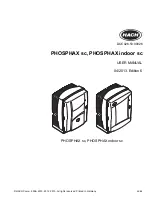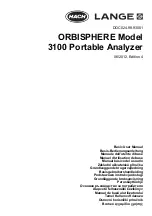
Ballenger Motorsports AFR500v2 Manual Rev 1.4a - 11 -
Oxygen sensors are sensitive to temperature, pressure and
contaminants. A non-ideal sensor installation may dramatically
reduce your sensor life.
Ensure that there are no leaks in the exhaust system as this will falsely
indicate lean or high air fuel ratio values. The sensor should be
installed upstream of any air-injection equipment.
The sensor should not be installed in a pressurized environment and
therefore should be installed downstream of any turbochargers or
similar systems causing exhaust pressure.
The sensor should be installed upstream of any emissions systems and
catalytic converters.
Typically, the oxygen sensor should be installed 1ft to 4ft from the
exhaust ports. A sensor that is too close will receive frequent thermal
variations, leading to a reduced sensor life. A sensor that is too far
away may run too cold and risk condensate leading to reduced sensor
life.
The sensor should be installed at least 10˚ above horizontal to avoid
condensation and water pooling in the sensing element. Ideally the
sensor is installed off vertical between the 10 and 2 clock positions
(see Fig 4).
The electrical connector should be installed to maximize strain relief
at the sensor and connector, to keep the connector clean and free of
contaminants, and to keep the plastic connector away from excessive
heat.
Ballenger Motorsports AFR500v2 Manual Rev 1.4a - 12 -
Fig 4. Minimum installation angle above horizontal
11. Calibration
Sensor calibration is a
critical
step in setting up your AFR500v2
wideband system. Follow the steps below to reliably calibrate your
AFR500v2:
1.
Connect the wiring harness to the AFR500v2 controller and to
the oxygen sensor without power and ground. Hold the sensor
in FREE AIR by the wires or on a safe, non-reactive surface
that will not melt. Performing a calibration with the sensor in
the exhaust is unreliable even if the engine has been off for
days.
2.
Connect power and ground to the AFR500v2. The sensor will
rapidly heat up. Take care not to touch this sensor directly!
3.
Wait 10 minutes or more while the sensor saturates. The
longer, the better.
4.
Turn the calibration knob until the AFR500v2 reads “CAL–”.
If it reads “Air_”, turn clockwise. If it reads “Air
ˉˉ
”, turn
counterclockwise. When the AFR500v2 reads “CAL–”, your
sensor calibration is complete.



























